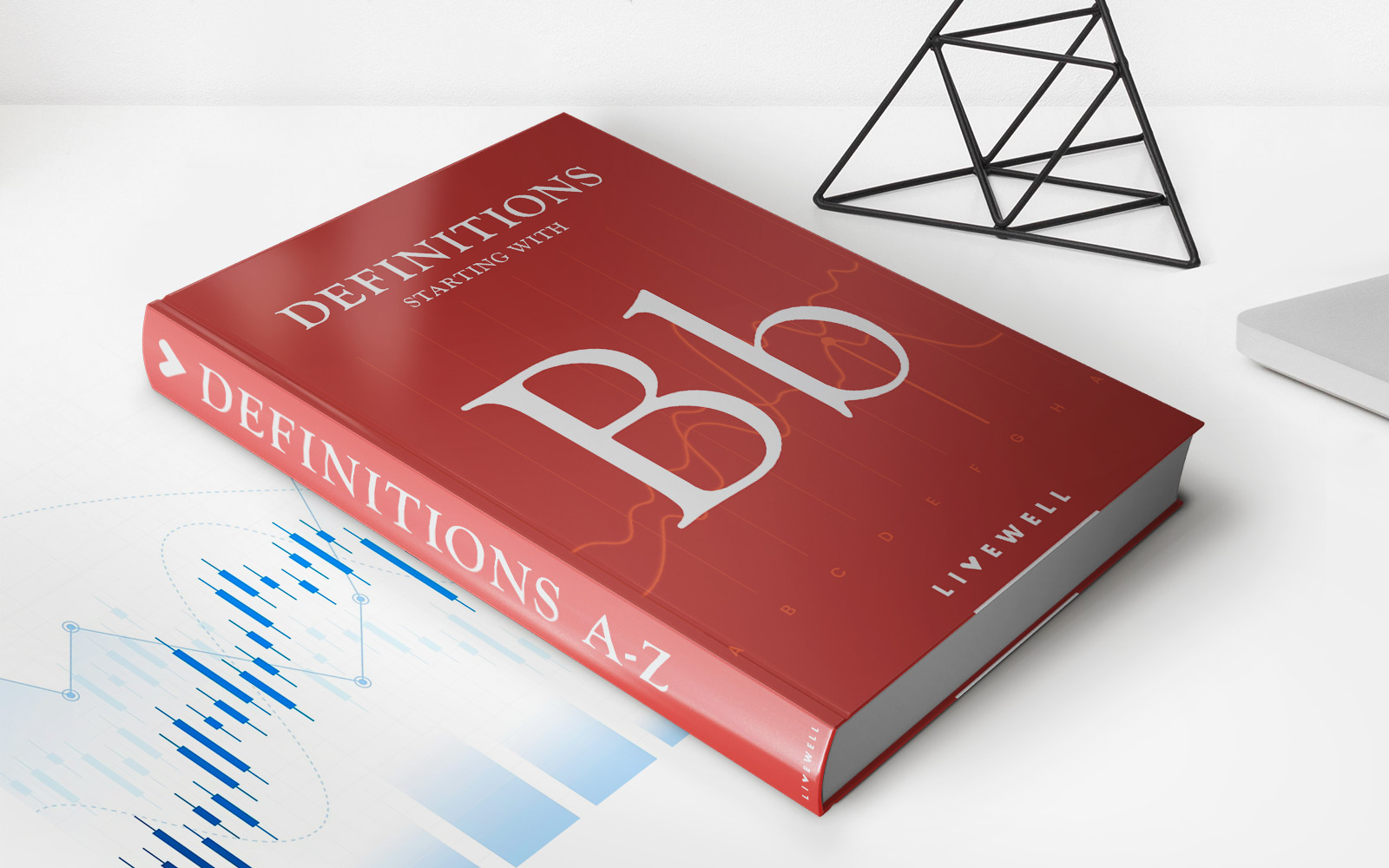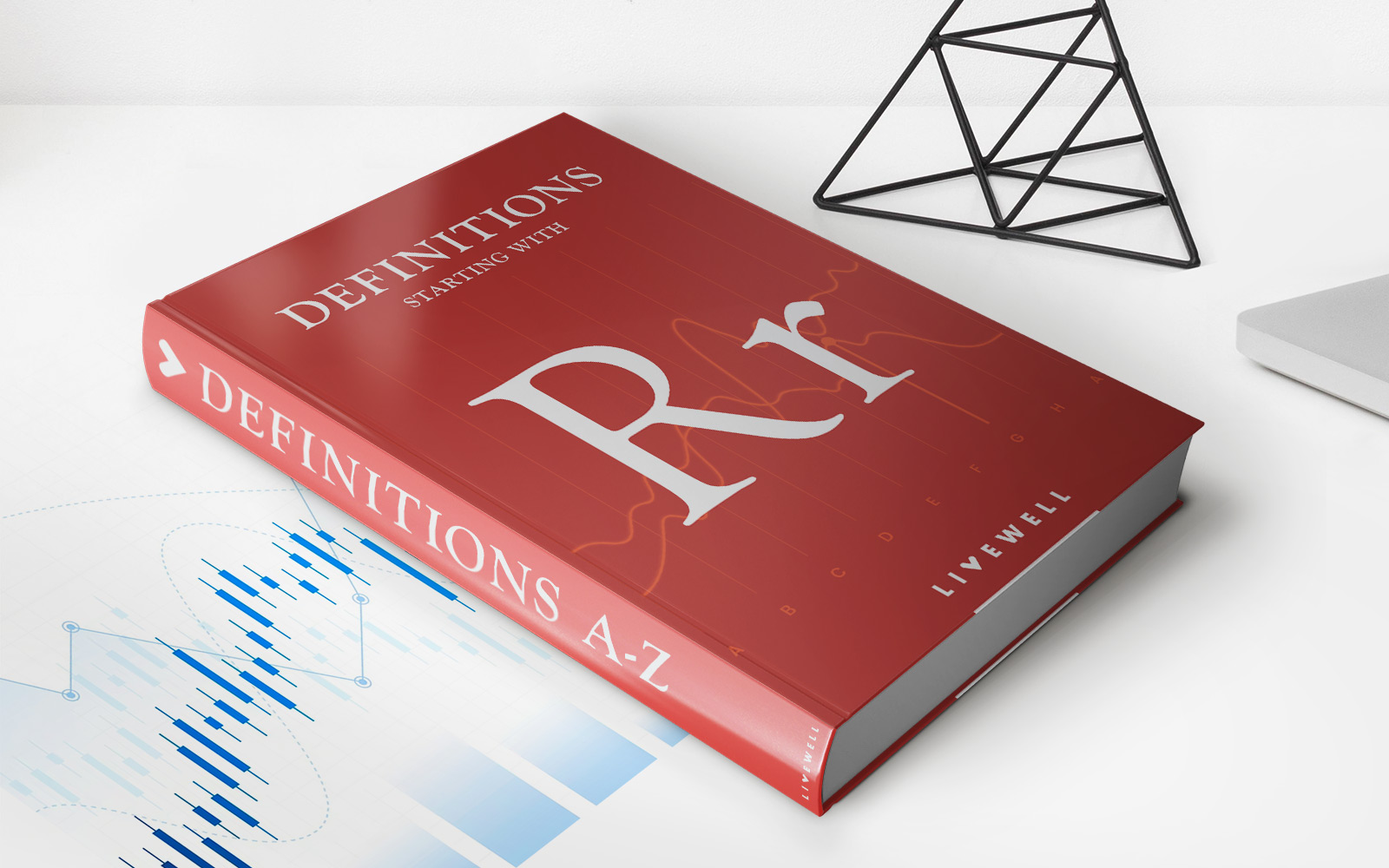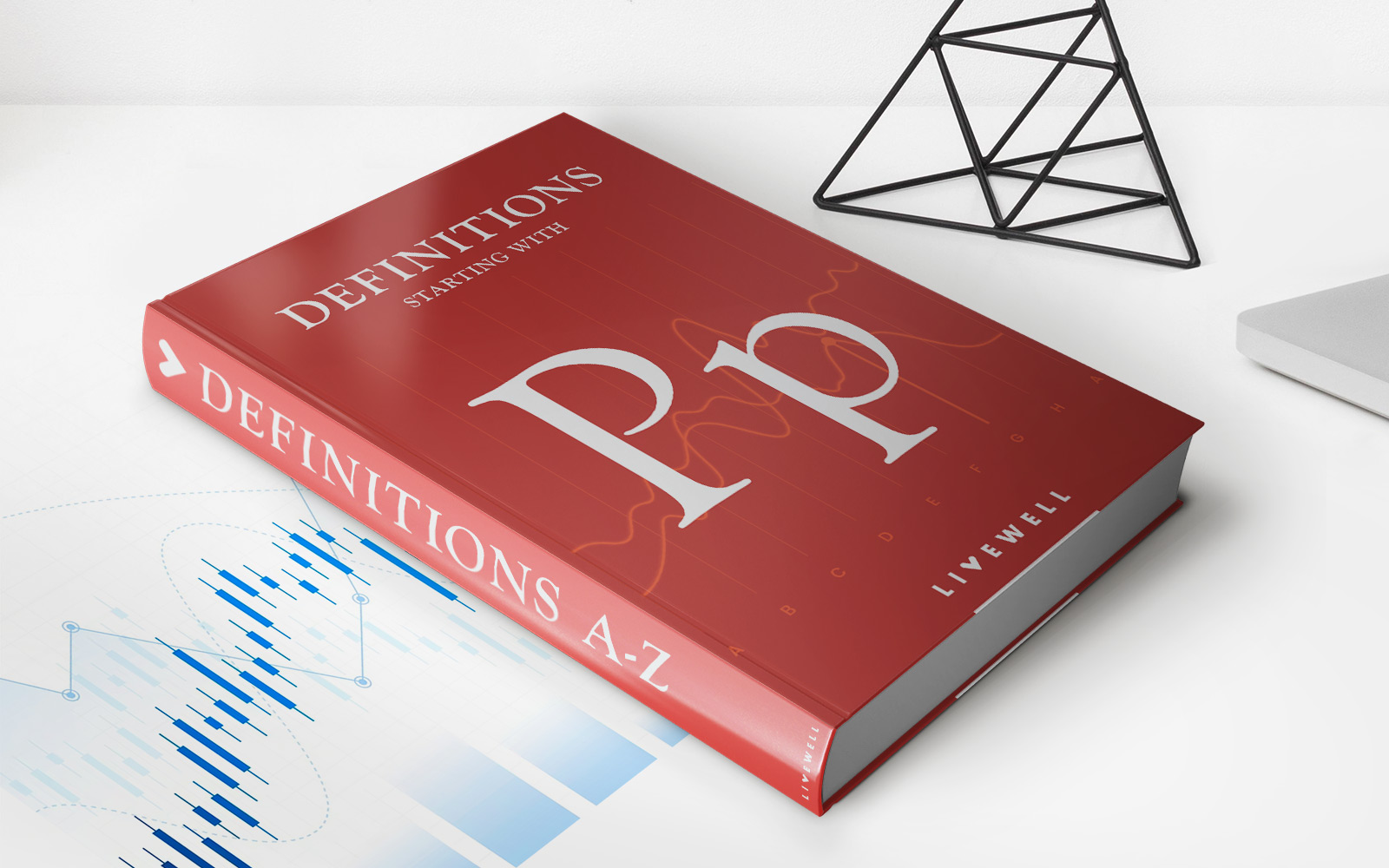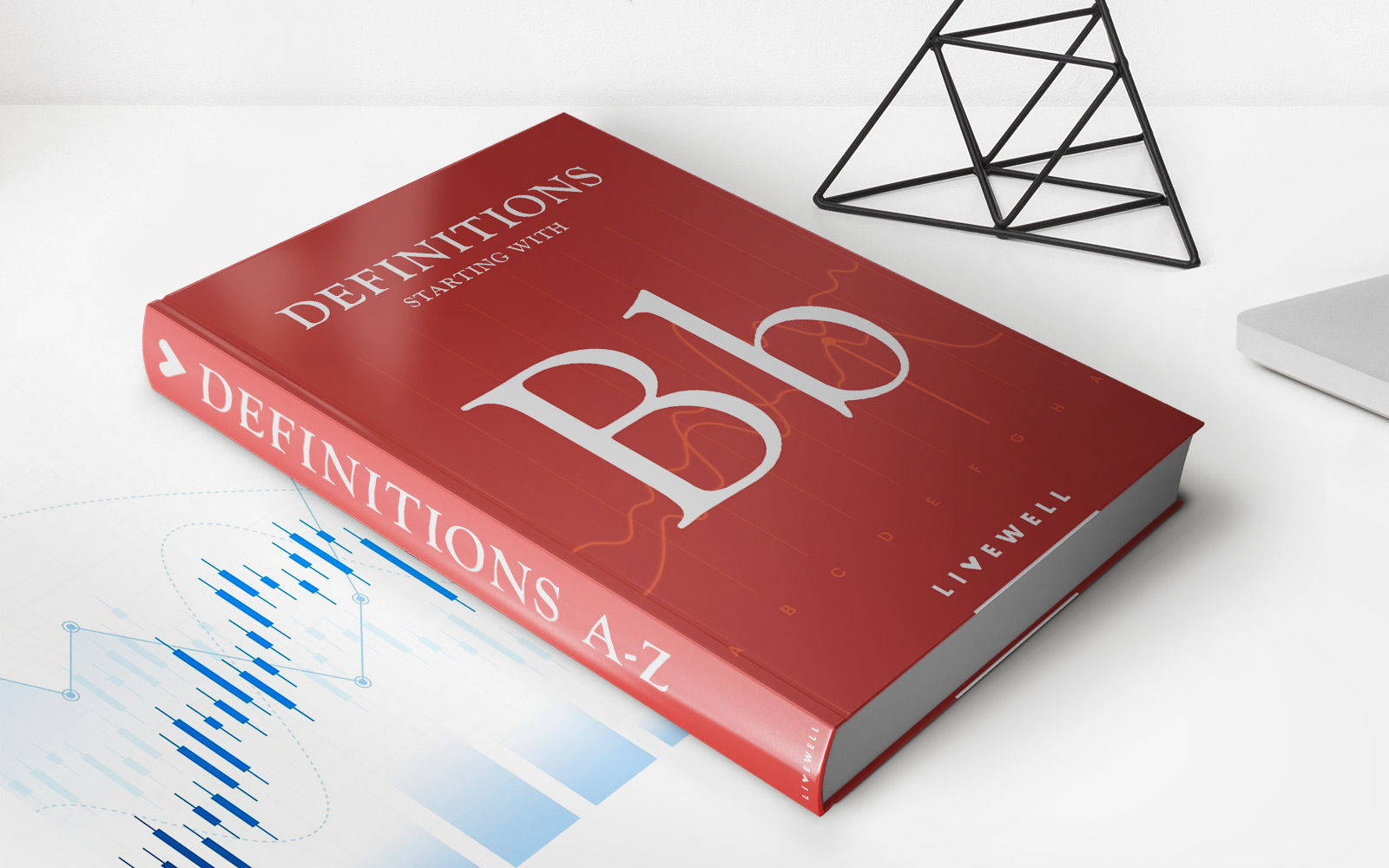Home>Finance>What Is A Buy-Sell Agreement In Life Insurance?


Finance
What Is A Buy-Sell Agreement In Life Insurance?
Published: October 16, 2023
Learn what a buy-sell agreement in life insurance is and how it can impact your financial stability. Understand the importance of this financial tool for your future.
(Many of the links in this article redirect to a specific reviewed product. Your purchase of these products through affiliate links helps to generate commission for LiveWell, at no extra cost. Learn more)
Table of Contents
- Introduction
- Definition of a Buy-Sell Agreement in Life Insurance
- Importance of a Buy-Sell Agreement in Life Insurance
- Components of a Buy-Sell Agreement
- Types of Buy-Sell Agreements
- Benefits of a Buy-Sell Agreement in Life Insurance
- Considerations for Creating a Buy-Sell Agreement
- Steps to Create a Buy-Sell Agreement
- Funding Options for a Buy-Sell Agreement
- Tax Implications of a Buy-Sell Agreement
- Common Mistakes to Avoid in a Buy-Sell Agreement
- Reviewing and Updating a Buy-Sell Agreement
- Conclusion
Introduction
A buy-sell agreement in life insurance is a crucial component of many business succession plans. It ensures a smooth transition of ownership in the event of a business owner’s death, disability, retirement, or other predetermined triggering events. This agreement outlines the terms and conditions for the sale of a business owner’s interest to the remaining owners or the business itself.
When it comes to small businesses or partnerships, the sudden departure of a co-owner can create significant challenges. Without a formal plan in place, disputes may arise over the business’s future, valuation, or the responsibilities of the remaining owners. A buy-sell agreement in life insurance helps businesses and their owners mitigate these risks by establishing clear guidelines and procedures.
Buy-sell agreements are commonly used in various business structures, including corporations, partnerships, and limited liability companies (LLCs). They play a crucial role in maintaining business continuity, ensuring a fair transition of ownership, and providing financial security for the departing owner’s family.
In this article, we will explore the definition, importance, components, types, benefits, considerations, funding options, tax implications, common mistakes to avoid, and the importance of reviewing and updating a buy-sell agreement in the context of life insurance.
Whether you are a business owner, a co-owner, or an advisor assisting businesses in succession planning, understanding the ins and outs of a buy-sell agreement in life insurance is essential to protect your financial interests and the future of the business.
Definition of a Buy-Sell Agreement in Life Insurance
A buy-sell agreement in life insurance is a legally binding contract between business owners that outlines the terms and conditions for the sale or transfer of a departing owner’s interest in the business. It is typically triggered by specific events, such as the death, disability, retirement, or voluntary departure of one of the owners.
The purpose of a buy-sell agreement is to ensure a smooth transition of ownership and protect the interests of both the departing owner and the remaining owners. By establishing a clear framework for the transfer, the agreement helps avoid disputes, provides financial security for the parties involved, and maintains continuity in the business.
In the context of life insurance, a buy-sell agreement is often funded through life insurance policies on the lives of the business owners. Each owner typically purchases a life insurance policy on themselves, and the policy’s proceeds are used to finance the purchase of the departing owner’s interest in the business.
The buy-sell agreement sets forth the terms and conditions under which the life insurance proceeds will be utilized. It establishes the valuation method for determining the purchase price of the departing owner’s interest and outlines the funding mechanism to ensure that the necessary funds are available when the agreement is triggered.
Buy-sell agreements can be structured in various ways, depending on the needs and preferences of the business owners. They can be structured as cross-purchase agreements, where each owner agrees to purchase the interest of the departing owner, or as entity purchase agreements, where the business entity itself agrees to buy the interest.
The agreement may also include provisions for mandatory or optional buyouts, as well as financing arrangements, such as installment payments or the use of external financing sources. It is essential to draft the buy-sell agreement carefully to ensure it aligns with the owners’ goals, the business’s financial capacity, and relevant legal and tax considerations.
A properly drafted buy-sell agreement in life insurance provides clarity and peace of mind to business owners. It offers a roadmap for the future of the business, safeguards the interests of all parties involved, and helps maintain stability and continuity in times of transition.
Importance of a Buy-Sell Agreement in Life Insurance
A buy-sell agreement in life insurance plays a critical role in ensuring the long-term stability and continuity of a business. Here are several reasons why such an agreement is crucial:
1. Smooth Transition of Ownership: A buy-sell agreement facilitates a seamless transfer of ownership in the event of a triggering event, such as the death or retirement of a business owner. It provides a clear roadmap for how the departing owner’s interest will be sold or transferred, ensuring a smooth transition without disruptions or conflicts.
2. Protection of Business Value: The agreement includes provisions for valuing the departing owner’s interest in the business. This ensures fair compensation for the departing owner and prevents disputes over the business’s worth. By establishing an agreed-upon valuation method in advance, the buy-sell agreement protects the business’s value and prevents undervaluation or overvaluation of the departing owner’s interest.
3. Financial Security for the Departing Owner: A buy-sell agreement funded with life insurance provides financial security for the departing owner’s family or beneficiaries. In the event of the owner’s death, the proceeds from the life insurance policy can be used to buy out their interest in the business. This ensures that the owner’s family receives a fair and immediate financial benefit from their stake in the business.
4. Preservation of Business Control: A buy-sell agreement allows the remaining owners to maintain control and continuity of the business. It prevents the unwanted involvement of unqualified or incompatible individuals by ensuring that ownership remains within the existing owner group or the business entity itself. This preserves the business’s vision, mission, and strategic direction.
5. Minimization of Disputes: Without a buy-sell agreement, disagreements and conflicts can arise among the remaining owners, the departing owner’s family, or other stakeholders. A well-crafted buy-sell agreement helps minimize the potential for disputes by clearly defining the terms and conditions of the ownership transfer. It provides a legally binding framework that all parties involved can rely on.
6. Protection of Creditors’ Interests: In the event of a business owner’s death, proper planning with a buy-sell agreement protects the interests of creditors. By ensuring an orderly transfer of ownership, the agreement reduces the risk of financial instability or interruption in the business’s operations. This helps maintain the business’s creditworthiness and protects the ability to fulfill financial obligations.
Overall, a buy-sell agreement in life insurance provides peace of mind to all parties involved in a business. It establishes a clear plan for the future, protects the financial interests and well-being of all stakeholders, and promotes a smooth and orderly transition of ownership. For owners, it is a crucial tool to safeguard their investment and ensure the long-term success of their business.
Components of a Buy-Sell Agreement
A buy-sell agreement in life insurance typically includes several key components that govern the transfer of ownership in a business. These components are designed to provide clarity, establish fair terms, and ensure a smooth transition. Here are the essential elements commonly found in a buy-sell agreement:
- Triggering Events: The buy-sell agreement defines the events that will trigger the agreement’s activation, such as the death, disability, retirement, or voluntary departure of a business owner. These triggering events determine when the agreement comes into effect.
- Valuation Method: A buy-sell agreement establishes the method or formula used to determine the value of the departing owner’s interest in the business. This valuation method sets the basis for calculating the purchase price and ensures a fair and accurate assessment of the ownership stake.
- Purchase Price: The agreement outlines the specific terms for determining the purchase price of the departing owner’s interest. It may specify a fixed price, a formula-based price, or require periodic valuations to determine the price at the triggering event. The purchase price is an essential component as it governs the financial aspect of the transaction.
- Funding Mechanism: A key consideration in a buy-sell agreement is how the purchase of the departing owner’s interest will be funded. Life insurance is often utilized as the funding mechanism, with each owner holding a life insurance policy on the other owners’ lives. The agreement specifies how the life insurance proceeds will be used to fund the purchase, whether through a cross-purchase arrangement or with the business entity acting as the purchaser.
- Payment Terms: The agreement may outline the payment terms for the purchase price, including whether it will be paid in a lump sum or in installments over a specified period. It may also provide for financing arrangements, such as external funding sources or internal cash flow, to facilitate the payment.
- Transfer Restrictions: A buy-sell agreement often includes provisions that restrict the transfer of ownership interests outside the group of existing owners. These restrictions help maintain control and ensure that ownership remains within the agreed-upon group or the business entity, limiting potential complications and conflicts.
- Dispute Resolution: In the event of disputes or disagreements between the parties involved, the agreement may include provisions for mediation, arbitration, or other dispute resolution methods to guide the resolution process. This helps to avoid costly and time-consuming litigation.
- Buyout Process: The buy-sell agreement outlines the process and timeline for executing the buyout, including the steps to be followed, the required legal documentation, and any specific conditions or contingencies that must be satisfied before the transfer is completed.
- Review and Amendment: It is important to include provisions in the buy-sell agreement for periodic review and potential amendments. This ensures that the agreement remains up-to-date and reflects any changes in the business’s structure, ownership, or valuation methods. Regular review and amendment help to address evolving circumstances and maintain the agreement’s effectiveness.
A well-crafted buy-sell agreement encompasses these critical components, providing a comprehensive framework for the transfer of ownership. By addressing these key elements, the agreement helps to structure fair transactions, minimize conflicts, and ensure a smooth and efficient transition for all parties involved.
Types of Buy-Sell Agreements
Buy-sell agreements can be structured in different ways to suit the specific needs and preferences of the business owners. Here are some common types of buy-sell agreements:
- Cross-Purchase Agreement: In a cross-purchase agreement, each business owner agrees to purchase the ownership interest of a departing owner. This type of agreement is commonly used in small businesses with a limited number of owners. When a triggering event occurs, the remaining owners buy the departing owner’s interest proportionally based on their ownership percentages. Life insurance policies are typically used to fund the buyout, with each owner holding a policy on the lives of the other owners.
- Entity Purchase Agreement: Also known as a stock redemption agreement or a stock purchase agreement, an entity purchase agreement involves the business entity itself buying the ownership interest of a departing owner. The business entity holds the life insurance policies on the owners, and the entity is the beneficiary of the policies. When a triggering event occurs, the entity uses the life insurance proceeds to buy out the departing owner’s interest.
- Wait-and-See Agreement: A wait-and-see agreement combines elements of both the cross-purchase and entity purchase agreements. In this type of agreement, the structure of the buyout depends on the circumstances at the time of the triggering event. If certain pre-defined events or ownership thresholds are met, the buyout is executed as a cross-purchase agreement among the remaining owners. Otherwise, it is structured as an entity purchase agreement, with the business entity buying the departing owner’s interest.
- Hybrid Agreement: A hybrid agreement is a customized buy-sell agreement that incorporates different elements from various types of agreements. It takes into account the unique circumstances and preferences of the business owners. For example, it could involve a combination of cross-purchase and entity purchase arrangements, or it may include provisions for external financing sources to fund the buyout.
- One-Way Agreement: In certain situations, a buy-sell agreement may be designed as a one-way agreement. This means that only one party, such as the majority owner or the business entity, has the option or obligation to buy out the interest of a departing owner. This type of agreement is often used when there is a significant disparity in ownership percentages or when the business entity desires control over ownership changes.
The choice of buy-sell agreement type depends on factors such as the number of owners, ownership percentages, the nature of the business entity, and the owners’ preferences. It is important to consult with legal and financial professionals to determine the most suitable type of agreement for the specific business and ownership structure.
Regardless of the type, a well-designed buy-sell agreement provides a framework for a fair and efficient transfer of ownership, ensures financial security for departing owners and their families, and helps maintain the stability and continuity of the business.
Benefits of a Buy-Sell Agreement in Life Insurance
A buy-sell agreement in life insurance offers numerous benefits for business owners and their businesses. Let’s explore some of the key advantages of having this agreement in place:
- Facilitates Smooth Ownership Transition: A buy-sell agreement provides a clear and structured plan for the transfer of ownership in the event of a triggering event. This ensures a smooth transition and minimizes disruptions or disputes among the remaining owners, as well as the departing owner’s family. Having a well-defined process in place can help maintain stability and continuity in the business.
- Ensures Fair Valuation: By specifying a valuation method in the buy-sell agreement, owners can determine a fair price for the departing owner’s interest. This helps prevent conflicts and ensures that the purchase price accurately reflects the value of the ownership stake, protecting the interests of both the departing owner and the remaining owners.
- Provides Financial Security: Life insurance is commonly used to fund buy-sell agreements. Each owner holds a life insurance policy on the lives of the other owners, ensuring that funds are available to buy out the departing owner’s interest upon a triggering event, such as death. This financial security provides immediate liquidity and protects the departed owner’s family, allowing them to receive the value of their ownership stake in the business.
- Maintains Business Control: A buy-sell agreement helps maintain control and continuity within the business. By specifying transfer restrictions, such as requiring the remaining owners or the business entity to purchase the departing owner’s interest, the agreement ensures that ownership stays within the desired group. This helps preserve the business’s vision, strategy, and day-to-day operations.
- Prevents Unwanted Ownership: Without a buy-sell agreement, the departing owner’s interest could potentially pass to individuals who may not have the necessary skills, qualifications, or alignment with the business’s goals. The agreement prevents unwanted or unqualified individuals from becoming owners by stipulating that only specific parties, such as existing owners or the business entity, have the right to acquire the interest.
- Minimizes Disputes and Litigation: A well-crafted buy-sell agreement helps minimize conflicts and disputes that may arise during ownership transitions. By providing clear guidelines and procedures, the agreement reduces ambiguity and potential disagreements among owners, the departing owner’s family, or other stakeholders. This minimizes the risk of costly and time-consuming litigation.
- Protects Creditor Interests: In the event of a business owner’s death, a buy-sell agreement helps protect the interests of creditors. By ensuring a smooth and orderly transfer of ownership, the agreement reduces the risk of financial instability or interruption in the business’s operations. This safeguards the business’s creditworthiness and its ability to fulfill financial obligations.
- Supports Business Succession Planning: A buy-sell agreement is an integral part of a comprehensive business succession plan. It allows owners to plan for the future, ensuring a smooth transition of ownership when retirement or other triggering events occur. The agreement provides the necessary framework to maintain the business’s stability, value, and long-term success.
In summary, a buy-sell agreement in life insurance offers a range of benefits, including a smooth ownership transition, fair valuation, financial security, business control, dispute prevention, creditor protection, and effective succession planning. Business owners should consider the advantages of having a buy-sell agreement in place to protect their interests and ensure the continued success of their businesses.
Considerations for Creating a Buy-Sell Agreement
Creating a buy-sell agreement is a complex process that requires careful consideration of various factors. Here are some key considerations to keep in mind when designing a buy-sell agreement:
- Ownership Structure: The ownership structure of the business is an important factor to consider. Whether your business is a partnership, corporation, or limited liability company (LLC), the buy-sell agreement should be tailored to align with the specific legal and structural requirements of your business entity.
- Triggering Events: Clearly define the triggering events that will activate the buy-sell agreement, such as death, disability, retirement, resignation, or divorce. Each triggering event may have different implications for the valuation and transfer of ownership, so be specific and detailed in outlining the circumstances that will trigger the agreement.
- Valuation Method: Determine the valuation method to be used when establishing the purchase price of the departing owner’s interest. Common valuation methods include book value, fair market value, or a predetermined formula based on financial metrics. Select a method that is fair, objective, and suitable for your business.
- Funding Mechanism: Choose an appropriate funding mechanism for the buy-sell agreement. Life insurance is often utilized to provide the necessary funds for the buyout, but other funding options such as cash reserves or external financing sources should also be considered. Ensure that the chosen funding mechanism aligns with the financial capacity and objectives of the business.
- Transfer Restrictions: Determine any transfer restrictions that will apply to the ownership interests. These restrictions help maintain control and prevent unwanted or incompatible individuals from becoming owners. Consider including provisions that restrict transfers to existing owners or stipulate the consent required for transfers to third parties.
- Tax Implications: Consult with tax professionals to understand the tax implications of the buy-sell agreement. Consider the potential impact of capital gains tax, estate tax, gift tax, and other relevant taxes. Adjust the terms and provisions of the agreement to minimize tax consequences while staying within legal boundaries.
- Legal and Financial Advice: Seek the expertise of legal and financial professionals with experience in buy-sell agreements. They can provide guidance on drafting the agreement, ensure compliance with applicable laws and regulations, and offer insights into common pitfalls and best practices.
- Review and Amendment: Regularly review and update the buy-sell agreement to ensure it remains relevant and effective. Changes in ownership interests, business structure, or tax laws may necessitate updates to the agreement. Set a schedule for periodic review and consider including provisions that allow for amendment when necessary.
Creating a buy-sell agreement requires careful thought and planning. Every business is unique, so it’s important to tailor the agreement to the specific needs, goals, and circumstances of your business and its owners. With proper consideration of these factors and the advice of professionals, you can create a comprehensive buy-sell agreement that protects the interests of all parties involved and ensures a smooth transition of ownership.
Steps to Create a Buy-Sell Agreement
Creating a buy-sell agreement requires careful planning and attention to detail. Follow these essential steps to develop a comprehensive buy-sell agreement for your business:
- Evaluate Business Ownership Structure: Understand the current ownership structure of your business, whether it is a partnership, corporation, or LLC. This evaluation will help determine the appropriate buy-sell agreement structure that aligns with the legal and structural requirements of your business entity.
- Identify Triggering Events: Clearly define the triggering events that will activate the buy-sell agreement, such as death, disability, retirement, or resignation. Consider the specific circumstances that will require the transfer of ownership and ensure each event is clearly stated in the agreement.
- Determine Valuation Method: Select a valuation method that will determine the purchase price of the departing owner’s interest. Common methods include book value, fair market value, or a predetermined formula based on financial metrics. Consult with a professional appraiser or a financial expert to determine the most appropriate valuation method for your business.
- Decide Funding Mechanism: Choose a funding mechanism for the buy-sell agreement. Life insurance is commonly used as it provides the necessary funds to facilitate the buyout. Determine whether a cross-purchase arrangement or entity purchase arrangement is suitable for your situation. Consult with an insurance professional to assess the appropriate coverage amounts and policy structure.
- Draft Agreement Terms and Conditions: Work with legal professionals to draft the terms and conditions of the buy-sell agreement. Ensure that the agreement addresses all relevant aspects, including purchase price, payment terms, transfer restrictions, dispute resolution, and any other specific provisions necessary for your business.
- Consult with Tax Professionals: Seek guidance from tax professionals to understand the tax implications of the buy-sell agreement. Consider the impact of capital gains tax, estate tax, gift tax, and other applicable taxes. Adapt the agreement’s provisions to minimize tax consequences while complying with the relevant tax laws and regulations.
- Review and Finalize the Agreement: Thoroughly review the draft agreements with all parties involved, including the business owners, legal advisors, and financial professionals. Make any necessary revisions to ensure clarity, accuracy, and alignment with the goals of the business and its owners. Once all parties are satisfied, finalize the agreement.
- Execution and Communication: Execute the buy-sell agreement by obtaining the signatures of all involved parties. Create copies of the agreement and distribute them to the appropriate individuals, including the business owners, legal advisors, and other relevant parties involved in the agreement.
- Regularly Review and Update: Set a schedule for periodic review and update of the buy-sell agreement. Circumstances change over time, including ownership interests, business structure, and tax laws. Regularly revisit the agreement to ensure its relevance and effectiveness. Make amendments as necessary to reflect any changes that have occurred.
Creating a buy-sell agreement is a crucial step in safeguarding the future of your business and protecting the interests of its owners. By following these steps and seeking professional guidance when needed, you can develop a robust buy-sell agreement that provides clarity, fairness, and financial security for all parties involved.
Funding Options for a Buy-Sell Agreement
Funding a buy-sell agreement is a critical aspect of ensuring its successful execution. Choosing the right funding option is essential to provide the necessary financial resources for the transfer of ownership. Here are some common funding options for a buy-sell agreement:
- Life Insurance: Life insurance is a popular and effective funding mechanism for buy-sell agreements. Each business owner purchases a life insurance policy on the lives of the other owners. When a triggering event occurs, such as death, the life insurance proceeds are used to fund the buyout of the departing owner’s interest. This ensures immediate liquidity to execute the agreement.
- Internal Cash Reserves: If the business has sufficient cash reserves, it can be used to fund the buy-sell agreement. Over time, the business sets aside funds specifically allocated for the purpose of buying out a departing owner’s interest. Internal cash reserves provide flexibility and control over the funding process, as they are readily available within the business.
- External Financing: In some cases, external financing may be necessary to fund the buy-sell agreement. This can involve securing a loan from a bank or another financial institution or obtaining financing from private investors or third-party lenders. External financing allows the business to access a larger amount of capital needed for the buyout, especially if cash reserves or life insurance proceeds are insufficient.
- Sinking Fund: A sinking fund is a special account that accumulates funds over time to finance the buyout. Similar to internal cash reserves, the business regularly contributes a predetermined amount to the sinking fund. These funds grow with interest and are available when a triggering event occurs. A sinking fund can provide a self-funded mechanism for future buyouts.
- Installment Payments: In certain cases, the buy-sell agreement may allow for installment payments to fund the buyout. The remaining owners pay the departing owner in installments over a specified period. This option can ease the immediate financial burden on the business and provide flexibility in meeting payment obligations. However, it’s essential to establish clear terms and conditions for the installment payments in the agreement.
- Combination of Funding Sources: Depending on the circumstances and financial capabilities of the business, a combination of funding sources can be used. For example, a buy-sell agreement may involve a combination of life insurance proceeds, internal cash reserves, and external financing to fund the buyout. This approach allows for greater flexibility and can ensure that the necessary funds are available when needed.
When determining the funding option for your buy-sell agreement, it is crucial to consider the financial capacity of the business, the availability and cost of life insurance policies, interest rates for external financing, and the potential for cash flow variations. Consulting with financial advisors and insurance professionals can help assess the viability and suitability of each funding option based on your specific business circumstances.
Regularly reviewing the funding provision of the buy-sell agreement is also important to ensure that it aligns with the changing financial situation and goals of the business. By selecting the appropriate funding option, you can ensure the availability of funds to execute the buy-sell agreement smoothly and protect the interests of all parties involved.
Tax Implications of a Buy-Sell Agreement
A buy-sell agreement can have significant tax implications for both the departing owner and the remaining owners. Understanding these tax considerations is crucial when creating and executing a buy-sell agreement. Here are some key tax implications to consider:
- Capital Gains Tax: When a buy-sell agreement is triggered, and the departing owner sells their interest in the business, capital gains tax may apply. The tax is calculated based on the difference between the purchase price and the adjusted tax basis of the ownership interest. The tax rate depends on various factors such as the holding period and the tax status of the owner.
- Estate Taxes: In cases where the buy-sell agreement is triggered by the death of a business owner, estate taxes may be a consideration. If the value of the departing owner’s interest exceeds the estate tax exemption threshold, estate taxes may be levied on the transfer of the interest. Planning for estate taxes should be part of the overall estate planning strategy.
- Income Tax Ramifications: The income tax consequences of a buy-sell agreement depend on the structure of the agreement and the type of business entity involved. For instance, in a cross-purchase agreement, the purchasing owners may be required to report dividend income if corporate-owned life insurance policies are used for funding. Consulting with tax professionals is essential to ensure compliance with relevant tax laws and regulations.
- Gift Taxes: If ownership interests are sold at a price below their fair market value, gift taxes may come into play. The Internal Revenue Service (IRS) sets annual and lifetime gift tax exemption amounts. It’s important to consider gift tax implications when determining the purchase price and structuring the buy-sell agreement to avoid unintended tax consequences.
- Alternative Minimum Tax (AMT): The AMT is a parallel tax system that may apply to certain taxpayers. When the triggering event occurs, the individual owners should consider the potential impact of the AMT on the sale of their ownership interest. Thoughtful planning and calculations can help minimize any AMT liabilities associated with the buy-sell agreement.
- Tax Basis Adjustment: Depending on the structure of the buy-sell agreement and applicable tax rules, the remaining owners may receive a tax basis adjustment for the purchased ownership interest. This adjustment can impact future depreciation or amortization deductions and affect the tax dynamics of the business going forward.
- Reporting Requirements: It is crucial to comply with all tax reporting requirements associated with the buy-sell agreement. This includes reporting the sale of the ownership interests and any resulting gains or losses on the appropriate tax forms, such as Schedule D of the individual tax return or Form 1065 for partnerships.
- Professional Tax Advice: Given the complexity of tax laws and regulations, seeking professional tax advice is strongly recommended when creating a buy-sell agreement. Tax professionals, such as certified public accountants (CPAs) or tax attorneys, can provide guidance specific to your business, help optimize tax strategies, and ensure compliance with applicable tax laws.
It’s important to note that tax laws and regulations may vary across jurisdictions, and they can change over time. Staying updated with the latest tax regulations and seeking expert advice is crucial to effectively manage the tax implications of a buy-sell agreement. By addressing tax considerations early on, you can navigate the process smoothly and optimize the tax outcomes for all parties involved in the buy-sell agreement.
Common Mistakes to Avoid in a Buy-Sell Agreement
When creating a buy-sell agreement, it’s important to be aware of common mistakes that can have significant consequences for the parties involved. By avoiding these pitfalls, you can ensure that your buy-sell agreement is effective and legally sound. Here are some common mistakes to watch out for:
- Inadequate Planning: Failing to plan adequately is one of the biggest mistakes in the buy-sell agreement process. Rushing through the creation of the agreement or neglecting critical details can result in ambiguity, disputes, or financial setbacks. It’s essential to consider various scenarios, consult with professionals, and carefully outline the terms and conditions of the agreement.
- Ignoring Valuation Methods: Neglecting to specify a valuation method or using an inappropriate valuation method can lead to disagreements and unfair outcomes. It’s crucial to select a valuation method that accurately reflects the fair market value of the ownership interests to ensure a fair purchase price and prevent valuation-related disputes.
- Failing to Update the Agreement: A buy-sell agreement should be a dynamic document that reflects the changing circumstances of the business and its owners. Neglecting to review and update the agreement periodically can result in outdated provisions, inaccurate valuations, or legal non-compliance. Regularly review the agreement to ensure its continued effectiveness.
- Overlooking Triggering Events: Failing to anticipate and include all possible triggering events in the agreement can have significant consequences. Failure to address events such as divorce, bankruptcy, or voluntary departure could leave the business vulnerable, causing disputes or uncertainties in the future. Consider all potential triggers and include them in the agreement to ensure comprehensive coverage.
- Insufficient Funding Plan: Inadequate funding planning can jeopardize the implementation of the buy-sell agreement. If the chosen funding mechanism, such as life insurance, is insufficient or not regularly reviewed, there may not be enough funds available to execute the buyout. Regularly reassess the funding plan and ensure it aligns with the changing needs and financial circumstances of the business.
- Failure to Address Financing Terms: If the buy-sell agreement involves installment payments or external financing, neglecting to specify the terms and conditions of the financing arrangement can lead to disputes and financial difficulties. Clearly outline the payment terms, interest rates, and any collateral requirements to avoid misunderstandings or financial strain.
- Ignoring Tax Implications: Tax implications play a significant role in buy-sell agreements. Failing to understand the tax consequences and seek professional tax advice can result in unexpected tax liabilities or missed tax planning opportunities. Weigh the tax implications carefully and consult with tax professionals to optimize the tax outcomes for all parties involved.
- Not Seeking Professional Advice: Attempting to create a buy-sell agreement without the guidance of legal and financial professionals is a common mistake. Buy-sell agreements are complex legal documents, and professional advice is crucial to ensure compliance with laws, address the specific needs of the business, and avoid costly errors or oversights.
Avoiding these common mistakes will help you create a well-structured and effective buy-sell agreement. Take the time to plan thoroughly, seek professional advice, address all necessary provisions, and periodically review and update the agreement to protect the interests of everyone involved and ensure the smooth execution of the agreement when triggered.
Reviewing and Updating a Buy-Sell Agreement
Reviewing and updating a buy-sell agreement is crucial to ensure its continued relevance and effectiveness. As your business evolves and circumstances change, it’s important to periodically assess and adjust the buy-sell agreement to align with the current needs and goals of the business and its owners. Here are some key considerations for reviewing and updating a buy-sell agreement:
- Establish a Regular Review Schedule: Set a schedule for reviewing the buy-sell agreement periodically. This can be done annually or every few years, depending on the business’s needs and any changes in ownership or the business’s structure. A regular review schedule helps ensure that the agreement remains up to date and reflects the current circumstances and objectives of the business.
- Assess Changes in Ownership: Consider any changes in ownership, such as new owners, departed owners, or changes in ownership percentages. If there have been changes, evaluate how these changes impact the buy-sell agreement and whether adjustments are necessary. Ensure that the agreement accurately reflects the current ownership structure.
- Review Valuation Methods: Assess the valuation methods specified in the buy-sell agreement. Are they still appropriate and indicative of the fair market value of the ownership interests? Consider any changes in industry trends, market conditions, or business performance that may influence the valuation. Make adjustments as needed to reflect accurate and fair valuations.
- Evaluate Funding Mechanisms: Evaluate the funding mechanisms outlined in the buy-sell agreement, such as life insurance policies or cash reserves. Ensure that the chosen funding mechanism is still suitable and sufficient to cover the potential buyout of a departing owner’s interest. Reassess the funding plan and make any necessary updates to accommodate changes in the business’s financial circumstances.
- Consider New Triggering Events: Review the triggering events specified in the buy-sell agreement. Are there any new events that should be included, such as changes in legislation or regulations that could affect the transfer of ownership? Consider any events that may have been overlooked initially, and ensure that the agreement covers all relevant triggering events.
- Address Tax Law Changes: Keep abreast of any changes to tax laws and regulations that may impact the buy-sell agreement. Ensure that the agreement aligns with the current tax legislation and optimize the tax outcomes for all parties involved. Consult with tax professionals to understand and address any new tax implications arising from changes in tax laws.
- Engage Professional Assistance: Seek the guidance of legal and financial professionals to assist in the review and update process. They can help identify any gaps or areas for improvement in the agreement, provide insights on current best practices, and ensure compliance with relevant legal and regulatory requirements.
- Obtain Consent and Reaffirmation: Once updates to the buy-sell agreement have been made, ensure that all parties involved review and provide their consent to the changes. Reaffirming the agreement with updated signatures helps ensure that all parties are aware of and agree to the updated terms and conditions.
Regularly reviewing and updating a buy-sell agreement is essential to protect the interests of the business and its owners. By keeping the agreement current, you ensure that it accurately reflects the business’s needs, changes in ownership, and potential triggering events. Engage professional assistance, stay informed of relevant legal and tax considerations, and periodically re-evaluate the terms of the agreement to maintain its effectiveness.
Conclusion
A buy-sell agreement in life insurance is a vital tool for business owners to ensure a smooth transition of ownership and protect their financial interests. By clearly outlining the terms and conditions for the transfer of ownership in the event of triggering events, such as death, disability, retirement, or voluntary departure, a buy-sell agreement provides stability, fairness, and financial security for all parties involved.
This comprehensive agreement encompasses various components, including triggering events, valuation methods, purchase price, funding mechanisms, and transfer restrictions. It is essential to carefully consider these components and tailor the agreement to the specific needs and goals of the business and its owners.
Creating a buy-sell agreement requires thoughtful planning, consultation with legal and financial professionals, and a thorough understanding of the tax implications. Avoiding common mistakes, regularly reviewing and updating the agreement, and ensuring compliance with changing laws and circumstances are crucial for ensuring its continued effectiveness.
A robust buy-sell agreement provides numerous benefits, such as facilitating a smooth ownership transition, ensuring fair valuation, providing financial security, maintaining control and business continuity, and minimizing disputes. It also supports effective business succession planning and protects the interests of all parties involved.
If you are a business owner or involved in a partnership or a corporation, understanding the importance and intricacies of a buy-sell agreement in life insurance is essential. By putting a well-crafted buy-sell agreement in place, you can protect your business and personal interests while laying the groundwork for a successful transition of ownership.
Remember to regularly review and update the agreement to adapt to changing circumstances and legal requirements. Engaging the expertise of professionals in legal, financial, and tax matters will ensure that your buy-sell agreement remains current, effective, and aligned with your business’s objectives.
By taking the necessary steps to create and maintain a solid buy-sell agreement, you can safeguard your business’s future, protect the interests of all parties involved, and ensure a seamless transition of ownership for generations to come.














